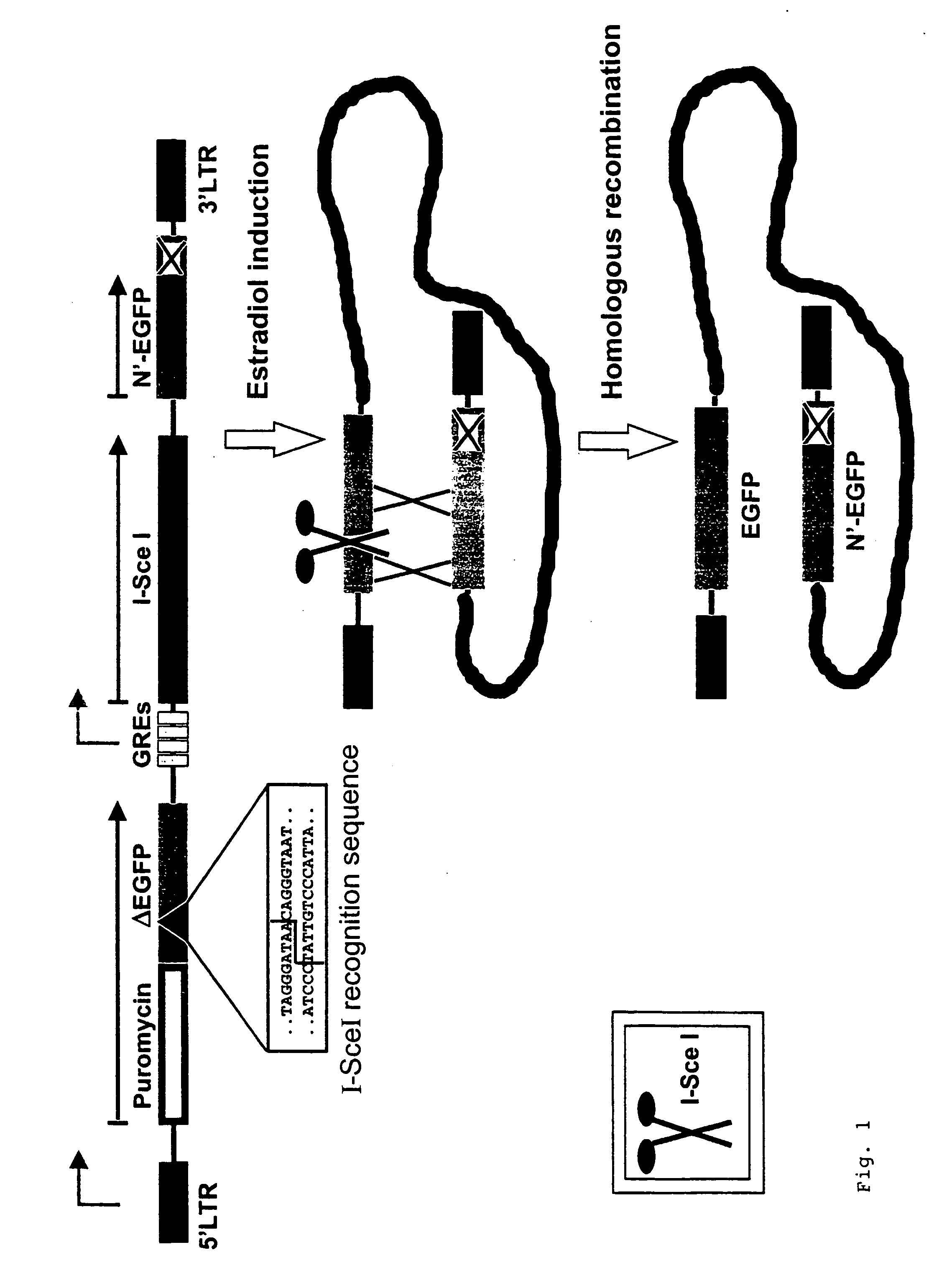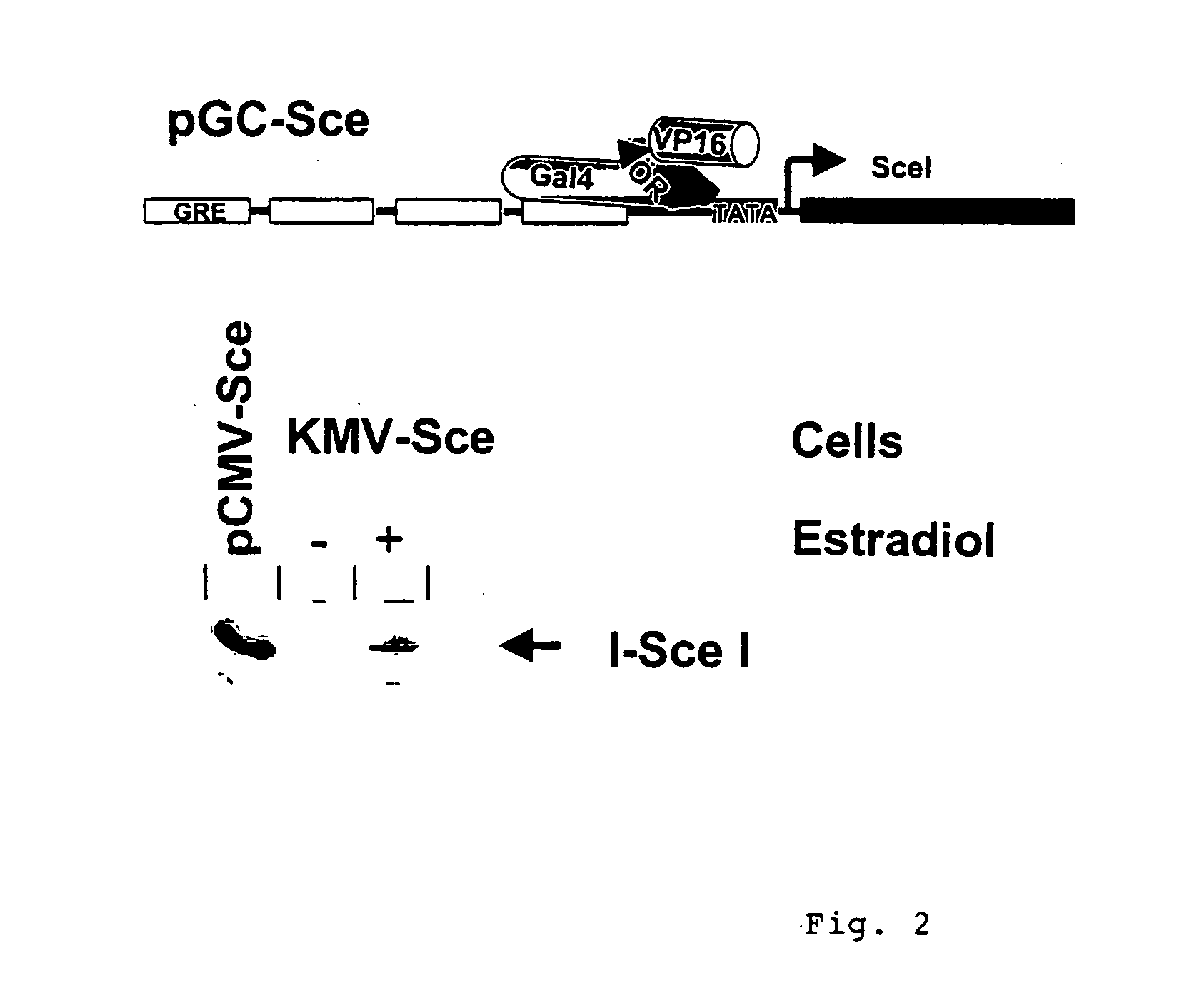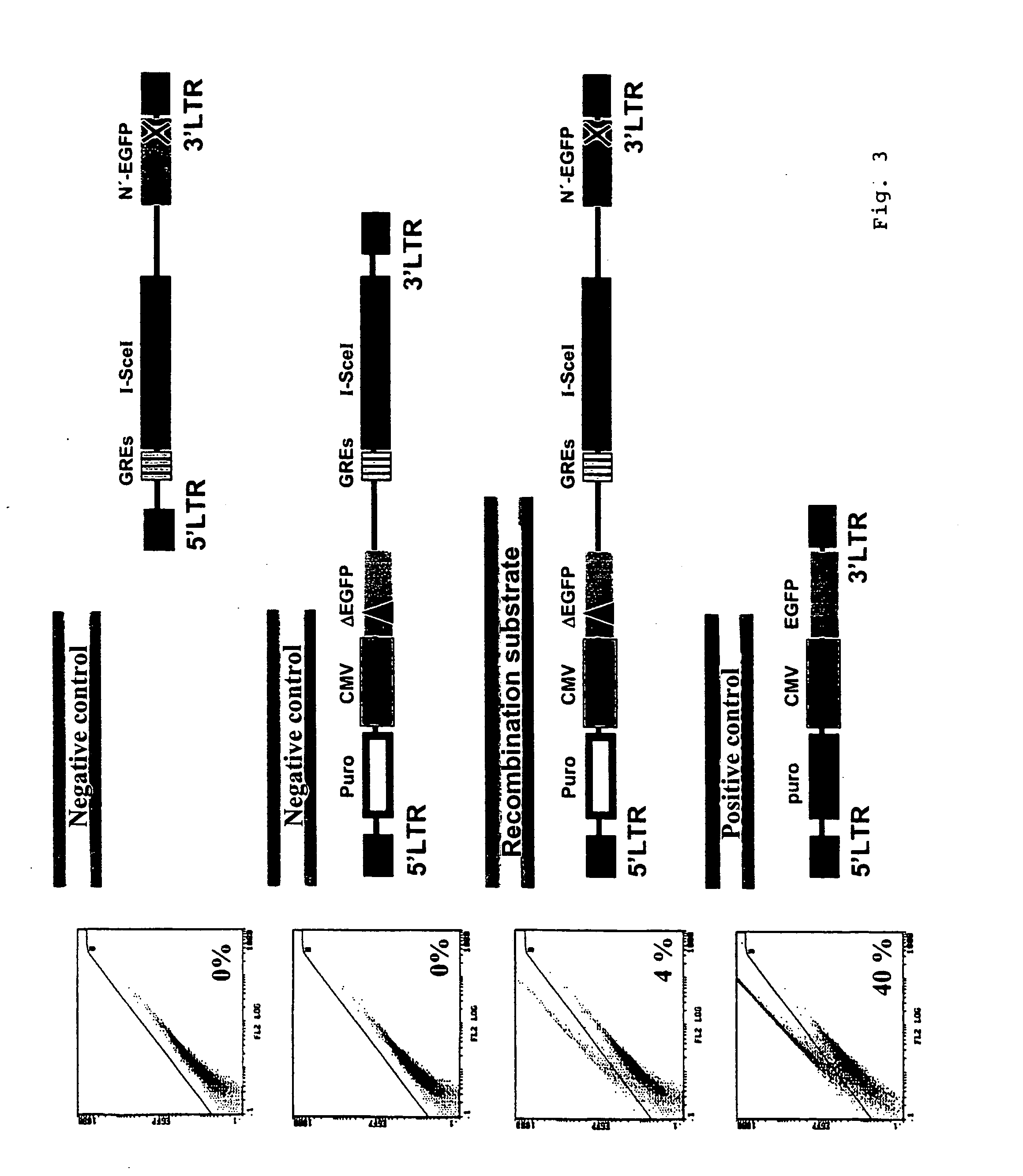Test system for determining gene toxicities
a test system and gene technology, applied in the field of test system for determining gene toxicities, can solve the problems of increasing not only the amount of labor and time invested, but also the limitations of methods, and the treatment of the compounds under investigation have not yet been clarified
- Summary
- Abstract
- Description
- Claims
- Application Information
AI Technical Summary
Benefits of technology
Problems solved by technology
Method used
Image
Examples
example 1
Cloning of p5-Puro-CMV-(N'-EGFP)-CMV-Red-(EGFP-EJ)
[0115] Cloning of the construct p5-Puro-CMV-(N'-EGFP)-CMV-Red-(EGFP-EJ) will be described in the following in a manner representative of the vectors in FIG. 5 (compare FIG. 5i and chapter 6 sequence protocol). The retroviral vector p5NM from Dr. Carol Stocking, Heinrich-Pette-Institut Hamburg, which belongs to the family of MPSV vectors, was used as the basis (Laker, C. et al. (1987) Proc. Natl. Acad. Sci. USA 84: 8458-8462). Restriction enzymes, Rapid DNA Ligation Kit.RTM., Klenow enzyme, T4 polymerase and shrimp alkaline phosphatase (SAP) were purchased from New England Biolabs, Schwalbach / Taunus, Roche, Mannheim, and MBI Fermentas, St. Leon-Rot. Bacteria transformations for cloning purposes were carried out using the bacteria strains XL10Gold.RTM., SURE.RTM., or SCS110 from Stratagene, Heidelberg, using standard methods (Ausubel, F. M. et al. (2000) Current Protocols in Molecular Biology, John Wiley and Sons). DNA blunt end format...
example 2
Generation of the .sub..DELTA.EGFP and EGFP-EJ Genes by PCR Mutagenesis
[0122] In a manner representative of the different mutations in the sequence coding for the chromophore amino acids within the EGFP gene, the construction of the .sub..DELTA.EGFP gene and the EGFP-EJ gene will be described here.
[0123] .sub..DELTA.EGFP was constructed via stepwise PCR amplifications. The terminal PCR primers (EGFP-13 and -15) for the complete .sub..DELTA.EGFP-PCR fragment introduced synthetic restriction enzyme recognition sites into the .DELTA.EGFP gene, namely for SexAI at the 5' end and for BamHI and EcoRI at the 3' end, so that these restriction sites were available for subsequent cloning in the reading frame of the puromycin resistance gene in pUC-Puro (compare example 1). The mutated region at the chromophore amino acids was engineered by firstly producing the sequence portion 5' and 3' to the mutation in the .DELTA.EGFP gene via 2 independent PCR reactions. The desired PCR products were pur...
example 3
Analysis of Individual KMV Cell Clones with a Genomic pGC-Sce Integrate Following I-SceI Expression After Estradiol Administration.
[0156] KMV cells represent K562 leukemia cells (Andersson, L. C. et al. (1979) Int. J. Cancer 23: 143-147) which express the transcription factor GalER-VP which can be activated by the administration of estradiol (Braselmann, S. et al. (1993) Proc. Natl. Acad. Sci. USA 90: 1657-1661). Following electroporation with the plasmid pGC-Sce, KMV clones were isolated with the construct integrated into genome (compare example 6). These clones were cultivated in tissue culture flasks from Nunc.TM., Wiesbaden. RPMI without phenol red (Gibco / BRL, Eggenstein) was used as the culture medium together with 10% FCS without steroid hormones (Promocell). The incubation of the cells was carried out at 37.degree. C. and in 5% CO.sub.2 in the incubator.
[0157] To activate GalER-VP and consequently indirectly the promoter in pGC-Sce via the Gal4 recognition sequences upstream ...
PUM
| Property | Measurement | Unit |
|---|---|---|
| wavelength | aaaaa | aaaaa |
| wavelength | aaaaa | aaaaa |
| excitation wavelength | aaaaa | aaaaa |
Abstract
Description
Claims
Application Information
 Login to View More
Login to View More - R&D
- Intellectual Property
- Life Sciences
- Materials
- Tech Scout
- Unparalleled Data Quality
- Higher Quality Content
- 60% Fewer Hallucinations
Browse by: Latest US Patents, China's latest patents, Technical Efficacy Thesaurus, Application Domain, Technology Topic, Popular Technical Reports.
© 2025 PatSnap. All rights reserved.Legal|Privacy policy|Modern Slavery Act Transparency Statement|Sitemap|About US| Contact US: help@patsnap.com



